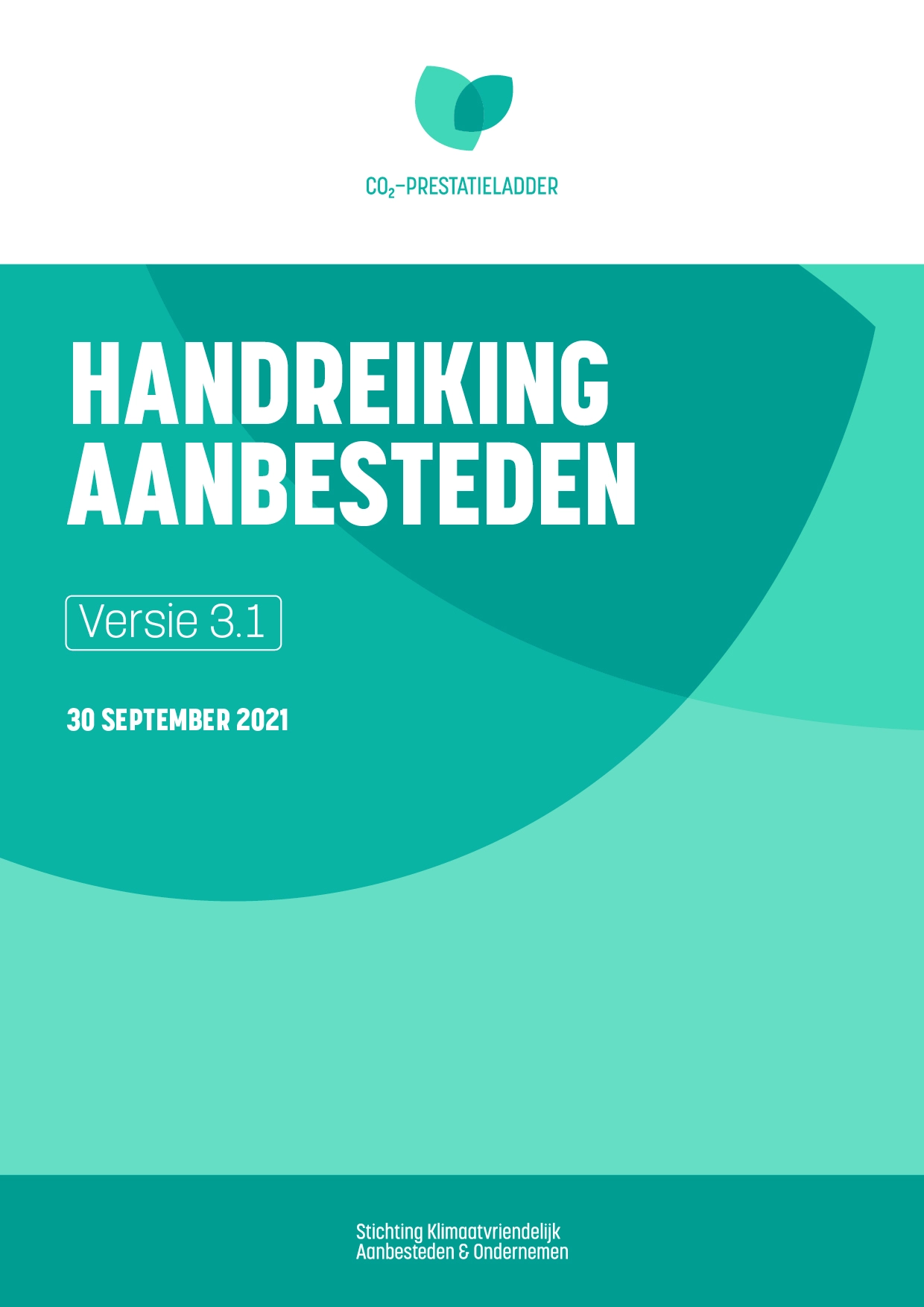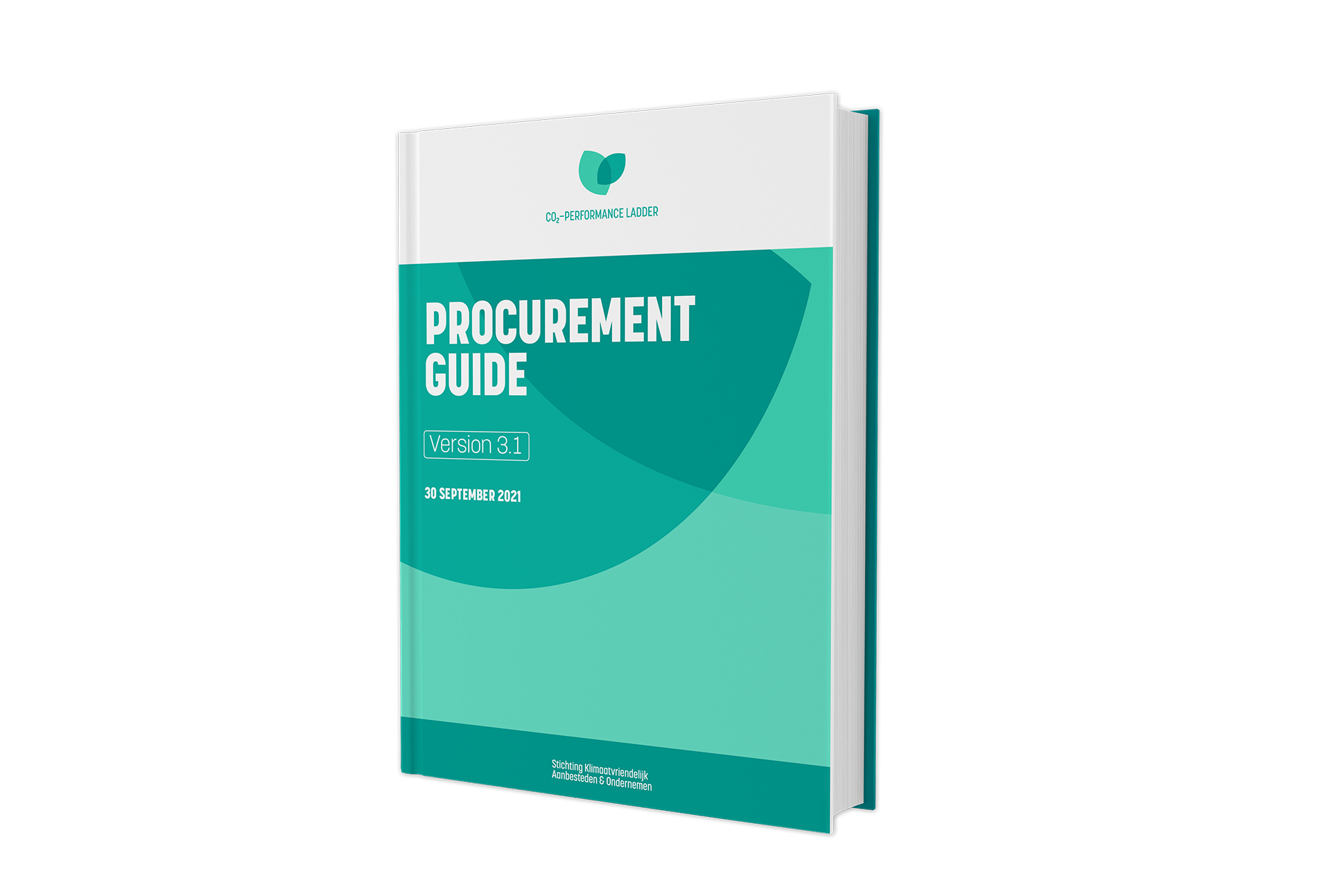
The new publication is good news, for example, for buyers who have never tendered with the CO₂ Performance Ladder, because Guide 3.1 promises practical tools, such as a step-by-step plan and ready-to-use tender texts. But project managers who are ready for the next step in the implementation are also served: in the new Guide they learn how to get a better grip on a project through a Dialogue during the implementation of projects with the aim of saving more CO₂. And the Guide is even interesting for companies that want to register with a project statement. Vincent Swinkels and Maud Vastbinder (SKAO) tell us everything we need to know about Procurement Guide 3.1.
Why did a new Procurement Guide need to be drawn up?
Maud: ‘The immediate reason for this publication was the publication of Handbook 3.1 last year, the normative document for certificate holders and Certifying organisations. The Procurement Guide must be in line with this in terms of content, because changing the standard also affects contracting authorities: they must be able to do something with a new certificate, or with organisations that opt for a project statement. To overcome this, we soon published a revised BPKV criterion together with the Public Procurement Advisory Council (formerly: Public Procurement Platform), but this has now been neatly embedded in the Procurement Guide. This BPKV criterion has not been changed further.’
What else is new?
Maud says that they have also approached the necessary updating of the Guide as an opportunity for improvement: ‘It was a great opportunity for us to take a good look again at the positioning and explanation of tenders with the CO₂ Performance Ladder. We mainly looked at whether the text could be shorter, clearer and more readable, without losing the content. That was the most work for us. Of course you have to think about it carefully. In this context, we have also added a step-by-step plan so that it is clear at a glance how to tender with the Ladder.” Vincent adds: “Over time, we have also received better answers to questions such as ‘which texts do you really have to include in a tender so that no mistakes are made in the process?” or “how do you deal with it when a party says that it would obtain the certificate, but failed to do so?”. We have also incorporated this in the new Procurement Guide. The CO₂ Performance Ladder as a tendering instrument must fit into your policy and there are texts that are best included in your tender.” Maud and Vincent also say that in addition to these tools for purchasers, a tool has also been added for project managers in the implementation phase: the Dialogue.

Procurement Guide 3.1
What is the Dialogue?
Vincent: ‘In short, the Dialogue is a conversation that the contracting authority enters into with the contractor about the steps it is taking to reduce CO₂ in the project. By conducting a Dialogue, the client and the contractor can work together to identify any bottlenecks and further measures.” The Dialogue is an optional step for clients. Maud: ‘Developing the Dialogue has been intensive, together with all kinds of stakeholders at both companies and contracting authorities. There were pilots, we evaluated them, and we bundled all the findings into what the Dialogue is now. It has therefore been tested in practice.” A clear step-by-step plan explains how the Dialogue can be organised and Maud explains that the starting point of the Dialogue is the Project File, in other words the documentation that a certified organisation must keep in accordance with Handbook 3.1 about projects that award advantage have been obtained. This makes the impact on projects not only more visible, but also discussed.
What do contracting authorities gain from the Dialogue?
Maud: ‘It gives them the opportunity to take a more active role in the project. Through the Dialogue, they can get a better grip on what happens on projects, and from this point of departure they can work together to reduce CO₂ emissions. It is an option for contracting authorities that want to take the next step. The new Procurement Guide explains how to conduct this Dialogue.’ Vincent: ‘By entering into a discussion with the contractor during the implementation phase, more impact can be made on the project. A contractor often sees opportunities, but will have to discuss this with the client. With the Dialogue, the contracting authority has a handle to enter into that conversation. We believe that more reduction is possible in this interaction between client and contractor than is currently the case.’
You call it an interaction: does the Dialogue also have benefits for the contractor?
Vincent: ‘Certainly, a contractor often already has all kinds of ideas for making the project more sustainable, but the client has to agree to them. Through the Dialogue they can distinguish themselves towards the contracting authority, show what they are doing and what else is possible in the field of CO₂ savings. Opportunities are so much more visible and better utilized on this project or else on a subsequent project.’ Maud adds: ‘Many contracting authorities have very strict rules, sometimes up to 40 years old, about, for example, having to throw away materials. That is no longer of this time. During such a conversation, new opportunities are presented more quickly. With the Dialogue, the contractor and client will discuss how they, as chain partners, can increase the impact together. Not from a competitive perspective, but together, viewed from the perspective of impact. We hope that the Dialogue on CO₂ reduction will further contribute to the movement that has been started and where more attention and priority is given to sustainability in the execution of projects. Take safety on the construction site as a comparison: that too has slowly increased , but now it is rock solid.’
From when is Procurement Guide 3.1 valid and what does that mean for Procurement Guide 3.0 and the additional BPKV criterion?
Vincent: ‘Guide 3.1 immediately replaces Guide 3.0 and the additional BPKV criterion and is therefore leading from publication. There is no transition period, because it is not a normative document.’ Until December 22 of this year, contracting authorities can still come across certificates that have been obtained on the basis of Handbook 3.1. SKAO advises purchasers to consider the certificates based on Handbook 3.0 and 3.1 as equivalent during this period.
Do you have any tips for contracting authorities?
Vincent does not have to think twice about this: according to him, contracting authorities that have not yet done so should also certify themselves on the CO₂ Performance Ladder: ‘Making an impact with the Ladder as a procurement instrument will work even better if contracting authorities are also certified themselves. Because then they gain insight into their own impact in terms of CO₂ and their role in the chain and where they can therefore also make more impact in the tender. Moreover, it sends out a very mature signal to tenderers: practice what you preach.’
During the event ‘Making an impact with Climate Neutral Procurement’ (Dutch only) on 14 October, the CO₂ Performance Ladder as a tendering instrument and the Dialogue will be further explained in a session by Annemiek Lauwerijssen, Harald Versteeg, Charlotte Pars and Stefan Daamen. How does it work again: tendering with the Ladder? And what should you do or not do in a conversation between client and contractor? You can still register! You will be informed about how and where you can register for the session.
>>> Download Procurement Guide 3.1 here.
>>> Download the step-by-step plan for procurement with the CO₂ Performance Ladder